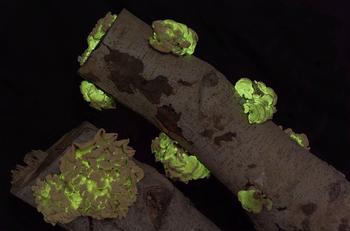
These bioluminescent mushrooms grow on decaying wood in the forests of eastern North America.
(© AMNH\J. Sparks)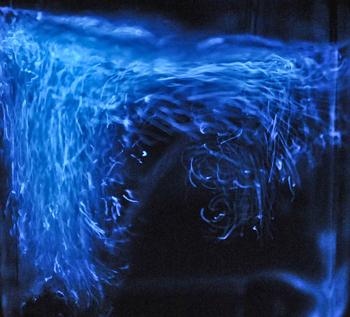
The flickering glow comes from thousands of live single-celled organisms called dinoflagellates. The species on display here, Pyrocystis fusiformis, is a spindle-shaped cell about one millimeter long—just large enough to be seen without a microscope. Tiny particles in each cell called scintillons contain chemicals that mix and make light when the water is shaken or stirred.
(©AMNH\D. Finnin)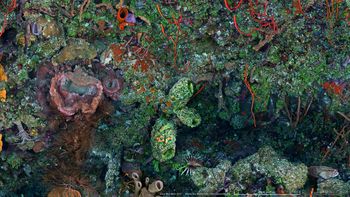
Cayman Islands’ Bloody Bay Wall, a species-rich coral wall that is home to many bioluminescent and biofluorescent animals. Still relatively pristine, Bloody Bay Wall drops down 1,000 feet.
This interactive mural captures a slice of life on Bloody Bay Wall, off Little Cayman Island in the Caribbean Sea. In daylight, creatures on this coral wall can be seen in fine detail. The same areas look very different at night, when lit by high-energy spotlights. The brilliant patches of red, green, and orange come from corals, fishes, and sea anemones that are fluorescent, not bioluminescent. The vivid colors only appear when the animals are illuminated by specific wavelengths of light.
(© Jim Hellemn, portraitofacoralreef.com)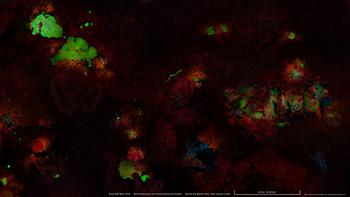
Cayman Islands’ Bloody Bay Wall, a species-rich coral wall that is home to many bioluminescent and biofluorescent animals. Still relatively pristine, Bloody Bay Wall drops down 1,000 feet.
This interactive mural captures a slice of life on Bloody Bay Wall, off Little Cayman Island in the Caribbean Sea. In daylight, creatures on this coral wall can be seen in fine detail. The same areas look very different at night, when lit by high-energy spotlights. The brilliant patches of red, green, and orange come from corals, fishes, and sea anemones that are fluorescent, not bioluminescent. The vivid colors only appear when the animals are illuminated by specific wavelengths of light.
(© Jim Hellemn, portraitofacoralreef.com)
Cayman Islands’ Bloody Bay Wall, a species-rich coral wall that is home to many bioluminescent and biofluorescent animals. Still relatively pristine, Bloody Bay Wall drops down 1,000 feet.
This interactive mural captures a slice of life on Bloody Bay Wall, off Little Cayman Island in the Caribbean Sea. In daylight, creatures on this coral wall can be seen in fine detail. The same areas look very different at night, when lit by high-energy spotlights. The brilliant patches of red, green, and orange come from corals, fishes, and sea anemones that are fluorescent, not bioluminescent. The vivid colors only appear when the animals are illuminated by specific wavelengths of light.
(© Jim Hellemn, portraitofacoralreef.com)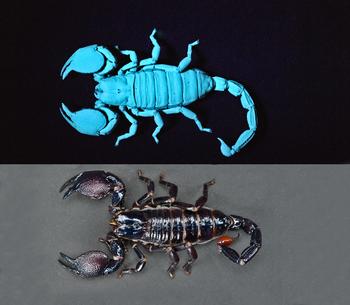
Minerals can contain fluorescent molecules that glow under ultraviolet light. Scorpions, some spiders, and many insects are fluorescent too.
(©AMNH\D. Finnin)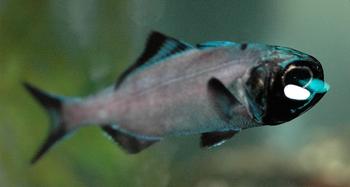
Live flashlight fish are on display in the exhibition. Flashlight fish harbor bioluminescent bacteria in an organ under their eyes and use the light produced by the bacteria to communicate, avoid predation, and to attract prey.
(© FMNH\L. Smith and AMNH\J. Sparks)